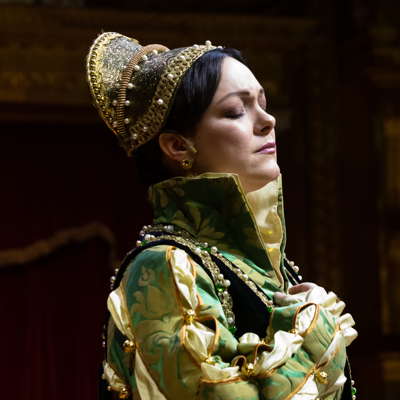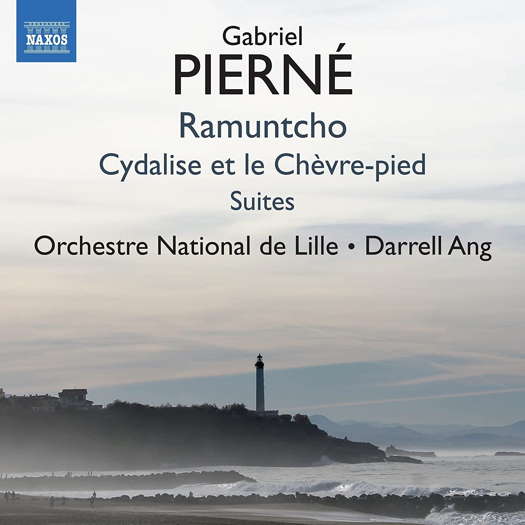- Heidi Lowy
- Francisco Barbieri
- Colin Carhart McPhee
- Mimis Plessas
- City of London Sinfonia
- Paul Provost
- Shoalhaven River
- Erfurt
 SPONSORED: An Integral Part - Lindsey Wallis looks forward to the Canadian Music Centre's tribute concert to composer Roberta Stephen.
SPONSORED: An Integral Part - Lindsey Wallis looks forward to the Canadian Music Centre's tribute concert to composer Roberta Stephen.
All sponsored features >>
 FROM ROME: From December 2009 until March 2023, the late Giuseppe Pennisi sent us regular reports from the Italian opera and classical music scene.
FROM ROME: From December 2009 until March 2023, the late Giuseppe Pennisi sent us regular reports from the Italian opera and classical music scene.

Lovingly Depicted
Orchestral suites by Pierné, heard by GERALD FENECH
'Darrell Ang keeps a tight but attentive reign on proceedings, and the Orchestre National de Lille responds with some superb playing full of energy and swagger.'
Gabriel Pierné was born in Metz on 16 August 1863. After parts of Lorraine were annexed to Germany in 1871 following the Franco-Prussian War, his family moved to Paris, where he studied at the local Conservatoire, gaining first prizes for solfege, piano, organ, counterpoint and fugue. He won the prestigious French Prix de Rome in 1882, with his cantata Edith. He had a number of excellent and very dedicated teachers, but the two that stand out were César Franck (organ) and Jules Massenet (composition). Indeed, he succeeded Franck as organist at Saint-Clotilde Basilica in Paris from 1890 to 1898, after which he was succeeded by another distinguished Franck pupil: Charles Tournemire.
Pierné was associated for many years with Edouard Colonne's concert series, the 'Concerts Colonne' (1903-1933), and in 1910 Pierné became chief conductor of this series. His most notable early performance was the world premiere of Stravinsky's ballet The Firebird at the Ballets Russes, Paris, on 25 June 1910. After his tenure ended in 1933, the renowned Paul Paray took over his duties. He made a few electrical recordings for Odeon Records from 1928 to 1934, conducting L'Orchestre Colonne, including a 1929 performance of his Ramuntcho and a 1931 version of excerpts from his ballet Cydalise et le chèvre-pied.
Pierné died in Ploujean, Finistere, on 17 July 1937, one month short of his seventy-fourth birthday, leaving for posterity a substantial number of works that include operas, choral and symphonic pieces as well as a good deal of chamber music. Coincidentally, this attractive album focuses on two of his best-loved orchestral compositions precisely referred to above.
Ramuntcho was composed in 1908 for a staged version of Pierre Loti's 1897 novel. Although the incidental music is melancholic, like Basque music in general, one of the main characteristics of these two suites is the quintuple rhythm of the 'Zortziko' which appears in the first half of the Overture and the latter part of the Rhapsodie.
Listen — Pierné: Ouverture (Ramuntcho Suite No 1)
(track 1, 0:32-1:29) ℗ 2021 Naxos Rights US Inc :
The story revolves around a smuggler and adventurer, Ramuntcho, who after three years of military service, returns to his village to marry his sweetheart Gracieuse. To his horror he finds out that the girl has been forced by her mother to enter a convent. Ramuntcho tries to convince her to marry him, but she decides to remain where she is. Challenged by the Mother Superior to decide between God and her lover, the emotional pressure is too much for Gracieuse, and she drops dead under the stress of it. Not much of a desirable plot, true, but Pierné's music contributed considerably to the success of the production, and the languor, passion and religious fervour of the Basque Country are all lovingly depicted in this imaginative score.
Listen — Pierné: Rapsodie basque (Ramuntcho Suite No 2)
(track 7, 3:59-4:56) ℗ 2021 Naxos Rights US Inc :
Cydalise et le chèvre-pied (Cydalise and the goat-foot) is a two-act ballet originally choreographed by Leo Staats to a story by Remy de Gourmont. Composed between 1914 and February 1915, its Paris premiere was delayed due to the conditions of the First World War. Its first performance took place on 15 January 1923 to great critical acclaim, and the ballet has remained one of Pierné's most popular compositions, although its staging is not that frequent.
Listen — Pierné: Danse de Styrax (Cydalise et le chèvre-pied Suite No 1)
(track 10, 0:00-0:58) ℗ 2021 Naxos Rights US Inc :
The story revolves around a young fawn, who while wandering about in nature, stumbles across Cydalise, a true human beauty, and immediately falls in love with her. Later that evening Cydalise is dancing at a performance, secretly watched by the fawn who is disguised by ballet tights. When Cydalise finishes her dance out comes the fawn to perform his own bit, following which Cydalise falls in love with this mysterious dancer. Just then Mother Nature makes her call, and the fawn has to return to his own natural landscape, emptyhanded.
The ballet is of an impressionist era, but the score is just gorgeous, brimming with luscious melodies, audacious harmony and ingenious orchestration. These two suites should win the work a legion of admirers. Darrell Ang keeps a tight but attentive reign on proceedings, and the Orchestre National de Lille responds with some superb playing full of energy and swagger.
Listen — Pierné: Final du 3ème Tableau (Cydalise et le chèvre-pied Suite No 2)
(track 14, 4:00-4:49) ℗ 2021 Naxos Rights US Inc :
How on earth is this enchanting tapestry of musical finesse still playing second fiddle to other less impressive but more performed pieces in this genre? It's all a matter of fortune, I guess. Whatever the case, this is an issue that should not be missed, and I have no doubt that once you have it on your shelf you will be going back to it time and time again. No qualms whatsoever regarding sound and presentation.
Copyright © 22 November 2021
Gerald Fenech,
Gzira, Malta

CD INFORMATION - PIERNÉ: RAMUNTCHO
CLASSICAL MUSIC ARTICLES ABOUT FRANCE


